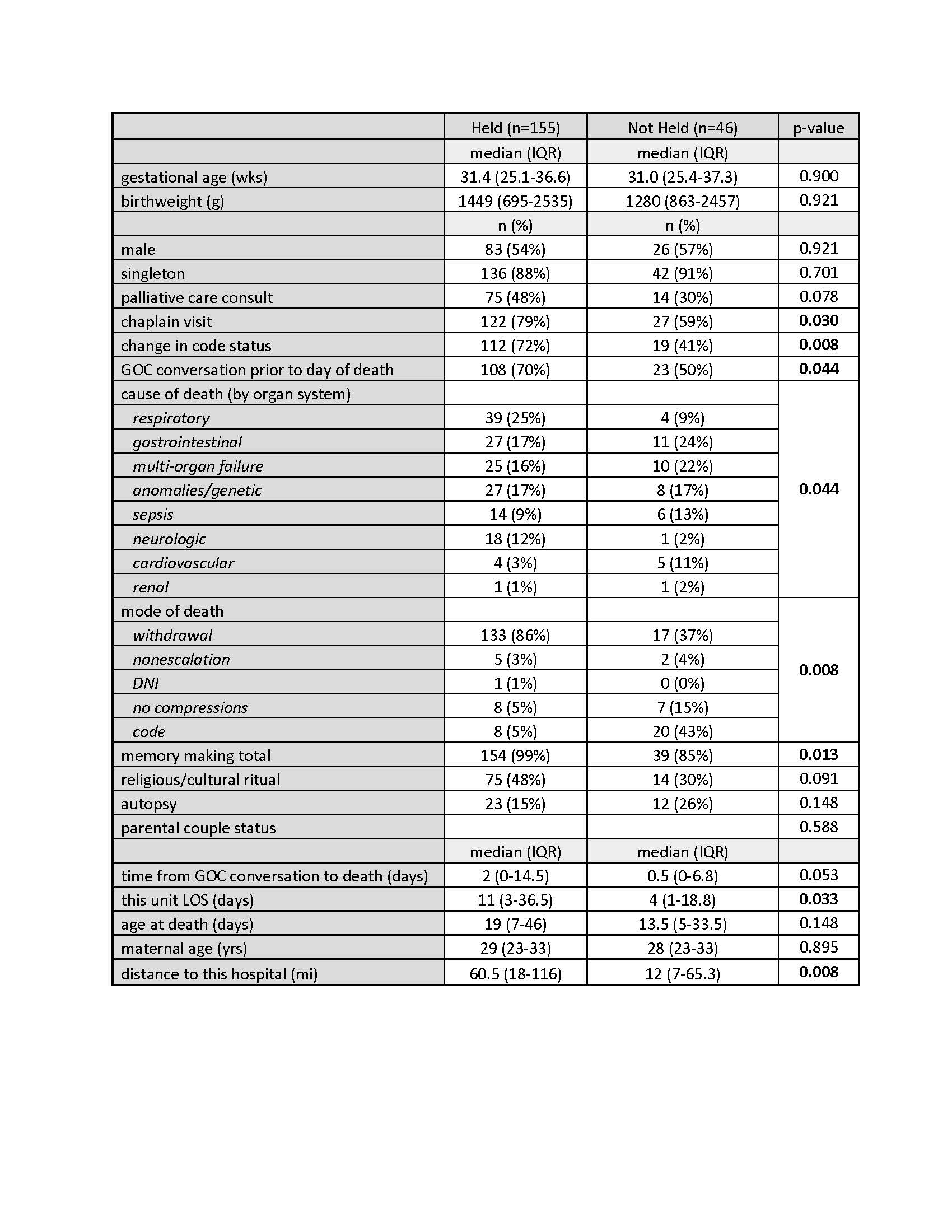Neonatal General
Neonatal General 3: Ethics, Parents Take the Lead
288 - Factors Associated with Parental Holding at End of Life in a Level IV NICU
Publication Number: 288.132
- CG
Catherine M. Groden, MD, MA (she/her/hers)
Neonatal-Perinatal Fellow
Indiana University School of Medicine
Indiana University School of Medicine
Indianapolis, Indiana, United States
Presenting Author(s)
Background:
Approximately 20,000 US infants die every year, many in a neonatal intensive care unit (NICU). Recommendations for end-of-life care in the NICU include facilitating parent and family holding, the creation of keepsakes, and allowing for family religious or cultural rituals. However, very little is known about the frequency and pattern of such practices, specifically, parent holding at time of death.
Objective:
Describe factors associated with parental holding at the end of life in the NICU.
Design/Methods:
Retrospective review of all infants who died in our level IV NICU or were discharged from the NICU on hospice care from 2017-2021. Infants who died in other hospital units or after non-hospice discharge from the NICU were excluded. Infants’ clinical characteristics, family characteristics, and end-of-life care data were collected. Infants who were held by a parent at death were compared to those who were not. Categorical factors were compared using chi-square or Fisher exact testing; continuous factors were compared using Mann-Whitney U test. P-values were adjusted for multiple comparisons.
Results:
Out of 213 infants, 155 (73%) were held by a parent at time of death; 46 (22%) were not. Details are given in the table. Gestational age, birthweight, and sex did not differ between groups. Infants who were held at death were more likely to have had chaplain visits, code status changes, and GOC conversations prior to the day of death. They were more likely to undergo formal memory making. They had longer length of stay in the level IV NICU. Their parents lived farther from the hospital.
Conclusion(s):
Most infants who died in our level IV NICU did so while being held by a parent. Goals of care conversations, length of stay, distance from the hospital, mode of death, and memory making were associated with holding at time of death.
This study provides novel information about the prevalence and pattern of holding at time of death in the NICU. It is important to note that holding at death may not be desired by all families. As we seek to understand this topic and improve our ability to facilitate holding where desired, we must also strive to respect families’ diverse views and preferences regarding end-of-life care.
